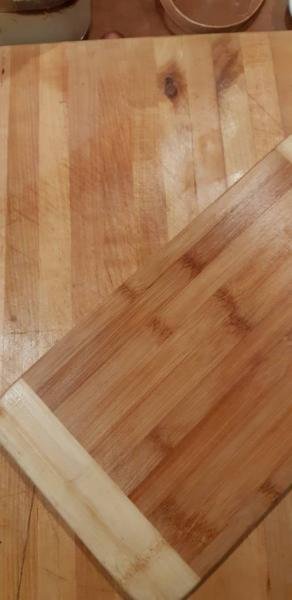I've bought a cheap natural wood cutting board, yes, very cheap, only $1.
I'd like to know
1. Which kind of food is recommended to be used on a wood board and which kind of food is NOT recommended to be used?
2. When to throw it away? Any sign?
I'd like to know
1. Which kind of food is recommended to be used on a wood board and which kind of food is NOT recommended to be used?
2. When to throw it away? Any sign?

